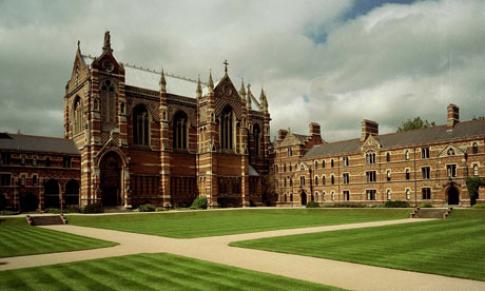Oxbridge places 'dominated by just five elite schools'

The extent to which a handful of elite schools dominate access to Oxbridge is laid bare in damning figures published for the first time today.
By Graeme Paton, Education Editor
Just five top schools send more pupils to Oxford and Cambridge than 2,000 other comprehensives or sixth-form colleges combined, figures show.
Data from the Sutton Trust charity reveals that schools including Eton, Westminster and St Paul’s now account for more than one-in-20 students admitted to Britain’s top two universities.
In all, privately-educated pupils are almost seven times as likely to get into Oxbridge as those from state comprehensives. They are also twice as likely to be admitted to Britain's top 30 universities.
The conclusions underline the extent to which parents’ ability to pay for a private education significantly improves children’s chances of getting into top universities and securing good jobs.
Last night, the Coalition insisted the findings represented a “damning indictment of Labour’s failure to improve social mobility”.
Nick Gibb, the Schools Minister, said: “Despite all their promises, they left hundreds of thousands of children with little to no chance of getting to the best universities.
“We are tackling these inequalities by increasing the number of good schools and targeting funding at the poorest pupils.”
The Russell Group, which represents 20 top universities, including Oxford and Cambridge, said the data reflected the fact that many poor students failed to gain decent A-level results.
Wendy Piatt, the group’s director general, added: “To make matters worse, even well qualified students from comprehensive schools are less likely to apply to highly selective universities than their peers from independent schools; we cannot offer places to those who do not apply.”
In the study, the Sutton Trust obtained data from 2,343 schools and colleges in England, showing the number of pupils admitted to higher education between 2007 and 2009.
Figures show some 48 per cent of pupils from independent schools won places at 30 top universities over the period, compared with just 18 per cent from state comprehensives and 27 per cent from sixth-form colleges.
Some 100 elite schools – almost all from the fee-paying sector – accounted for more than one-in-10 places at these universities.
Around nine-in-10 pupils from fee-paying North London Collegiate School, Withington Girls’ School in Manchester, Oxford High School and Magdalen College School, Oxford, got into top universities – more than any other schools in England.
But top schools had an even firmer grip on Oxbridge places, figures show.
More than five per cent of privately-educated pupils got into Oxford and Cambridge over the three year period, compared with just 0.8 per cent of those from comprehensives.
One hundred top schools – three per cent of those in England – account for almost a third of Oxbridge admissions, it was revealed.
Five schools sent 946 students to the universities in three years – more than the 927 admitted from 2,000 other schools and colleges nationally. The five were made up of four fee-paying schools – Westminster, Eton College, St Paul’s School and St Paul’s Girls School – and one state-run college, Hills Road Sixth Form College in Cambridge.
The study suggested that A-level results alone could not account for the differences as schools with similar academic records had hugely varying success rates. This suggests pupils from private schools, grammars and top colleges were significantly more likely to apply than students from many comprehensives.
It follows earlier Sutton Trust research that showed many state school teachers were "biased" against Oxbridge, often warning their pupils not to apply.
Sir Peter Lampl, chairman of the Sutton Trust, said: “We know these stark inequalities in university progression rates are driven primarily by the exam results in schools, yet the data we are publishing today also reveals that university chances can vary dramatically for schools with similar average grades.
“Our hope is that by making these figures available, the spotlight on schools will widen to encompass the actual destinations of pupils after they have left, alongside their A-level results.”
Telegraph




 del.icio.us
del.icio.us Digg
Digg

Post your comment